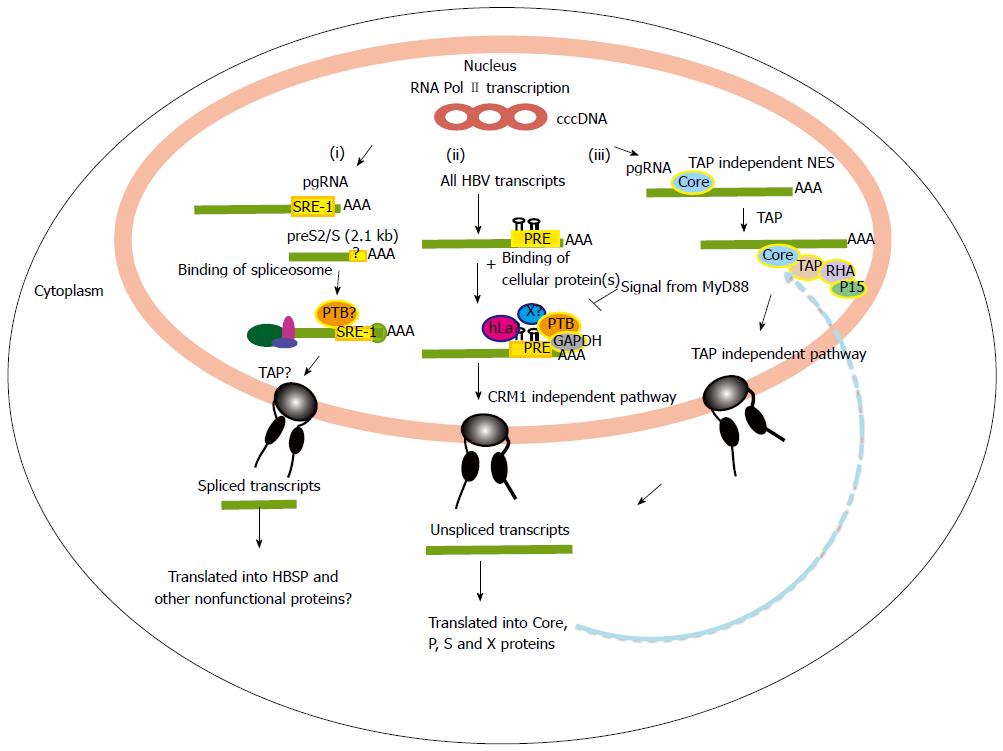Copyright
©2014 Baishideng Publishing Group Inc.
World J Gastroenterol. Jul 7, 2014; 20(25): 7993-8004
Published online Jul 7, 2014. doi: 10.3748/wjg.v20.i25.7993
Published online Jul 7, 2014. doi: 10.3748/wjg.v20.i25.7993
Figure 2 Nuclear export of hepatitis B virus mRNAs.
(i) Nuclear export for aberrant spliced hepatitis B virus (HBV) transcripts. In this pathway, HBV post-transcriptional regulatory element (PRE) enhances over-splicing of the pgRNA and perhaps also the S transcripts. The spliced RNAs are then possibly exported out via a TAP pathway. These spliced HBV transcripts are translated into apparently non-functional proteins such as HBSP; (ii) Nuclear export of major HBV unspliced and intronless transcripts e.g. the preS/S and X transcripts. For this pathway, HBV PRE plays roles in inhibiting splicing as well as mediating the nuclear export of the unspliced transcripts. The exact mechanism of this nuclear export pathway is unknown, but may involve binding of cellular proteins (PTB, GAPDH, hLa) near to conserved secondary structures of HBV PRE; and (iii) TAP dependent NES pathway of the pgRNA transcript. The core protein binds the pgRNA facilitating its export though the TAP/NFX1 pathway. SRE-1: Splicing regulatory element-1; NES: Nuclear export signals.
- Citation: Chen A, T-Thienprasert NP, Brown CM. Prospects for inhibiting the post-transcriptional regulation of gene expression in hepatitis B virus. World J Gastroenterol 2014; 20(25): 7993-8004
- URL: https://www.wjgnet.com/1007-9327/full/v20/i25/7993.htm
- DOI: https://dx.doi.org/10.3748/wjg.v20.i25.7993









